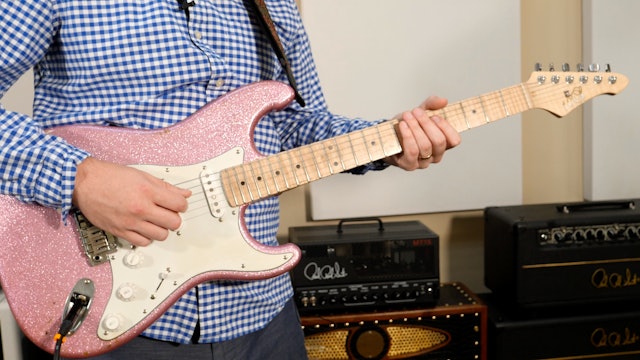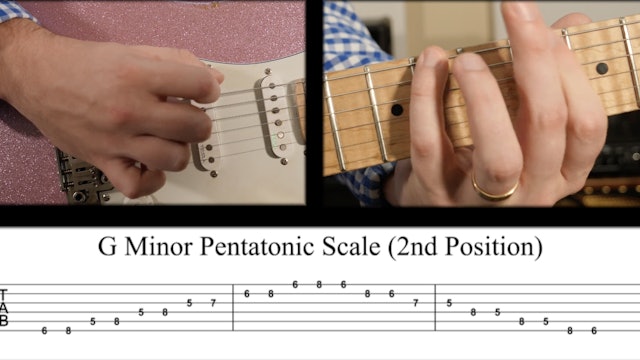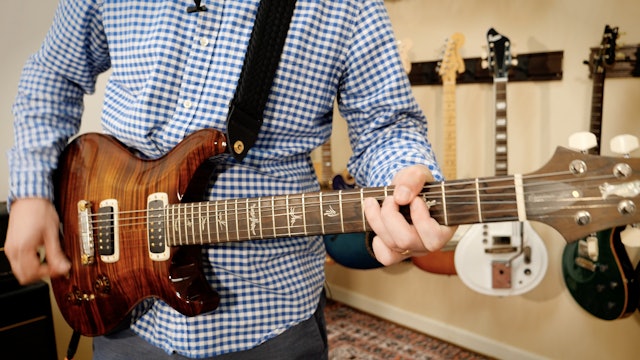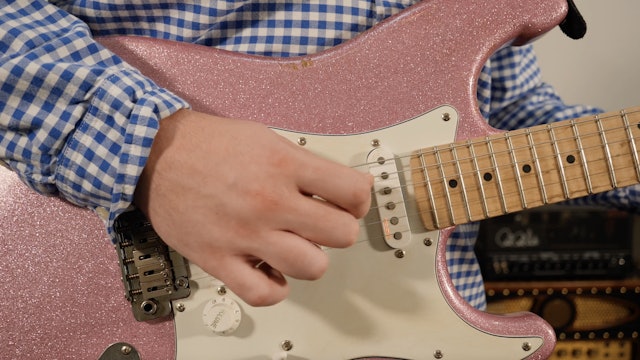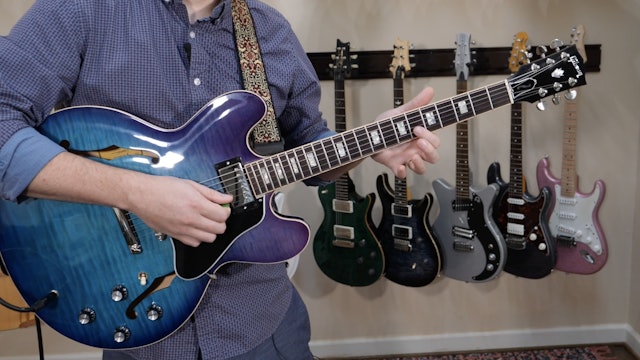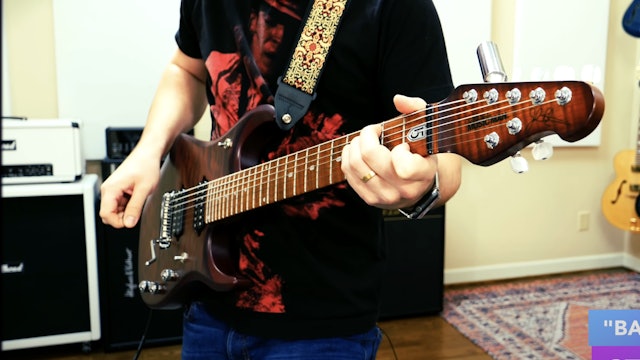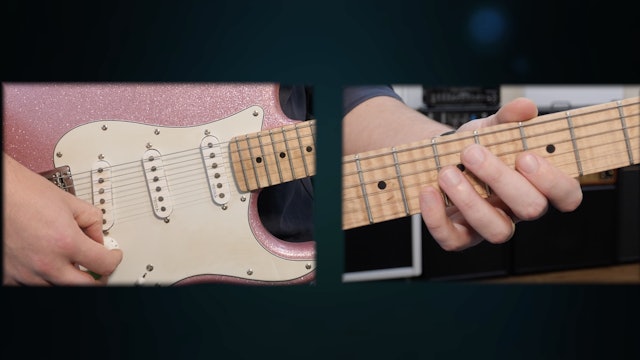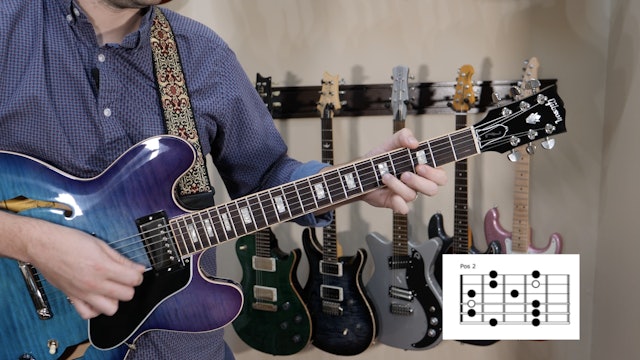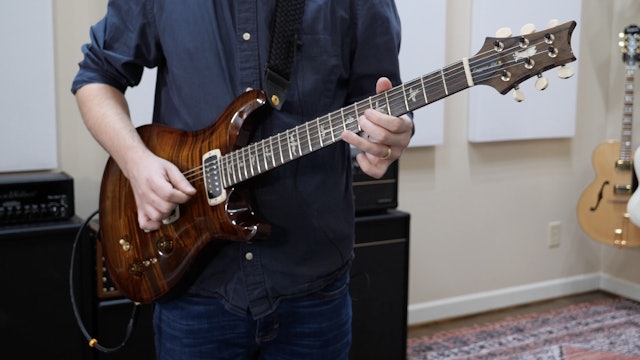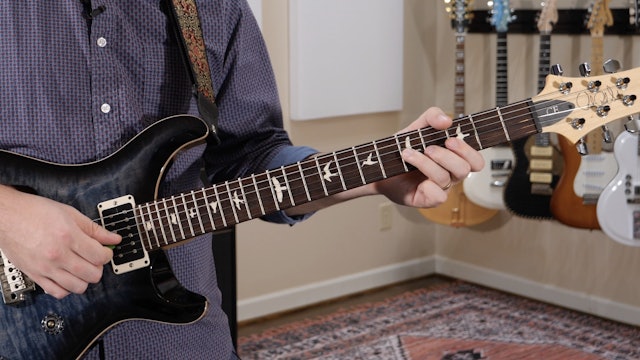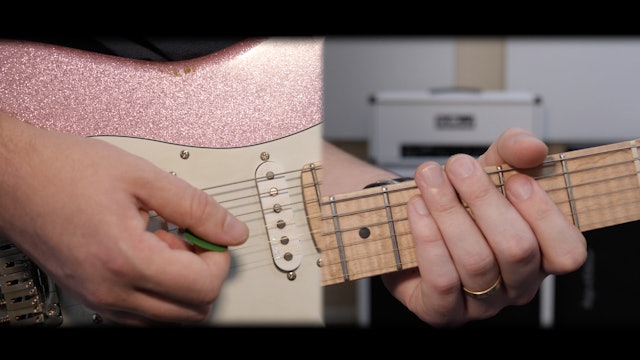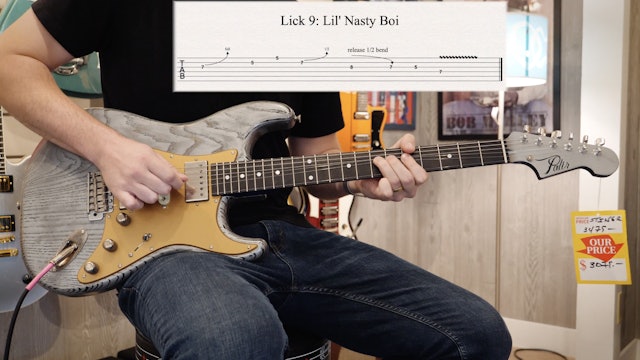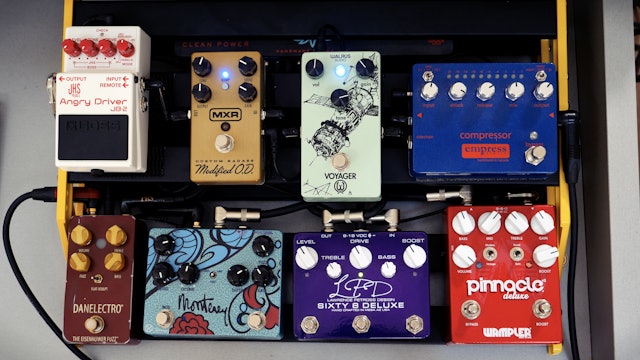Blues Guitar & Beyond
You can find all downloadable resources at the end of each curriculum in Guitar Super System, or altogether for use outside the app at https://musiciswin.com/resources
The most expressive sounds typically come from the blues genre, and you’ll learn how to bend, caress, wail, and everything in between. From the legends of the past to modern greats, we’ll go deep into technique, iconic licks, gear, and channeling your inner blues–we all have it!
-
The Minor Pentatonic Scale & Its 5 positions
The Pentatonic Scale is the foundation of blues guitar and the perfect place to begin your blues guitar journey. You’ll not only learn the uses of the scale in its basic form, but you’ll come to understand how its very simple ergonomic shapes through five different positions across the guitar nec...
-
Pentatonic Scale Position Playing Examples
It’s important to have strong fundamentals when learning scale positions in particular, as this sort of rote method is a timeless way to internalize a sound in your head while strengthening your muscle memory. You can feel free to use a drum loop or some other time-keeping device–as long as you h...
-
Minor Pentatonic Scale 2 Notes, 2 Strings Exercise
This is an exercise that will help you become more melodic with any scale, so I’d encourage you to give it a shot with any scale you want to learn to use. Pushing yourself toward the edge of your comfort zone is a great way to broaden your improvisational skills, no matter what level they’re at c...
-
Sweet Spots of the Minor Pentatonic Scale
In any scale, you’ll have a tendency to gravitate to certain comfortable positions on the guitar neck, and the positions of the Minor Pentatonic Scale contain plenty of such areas. I’ll detail a couple of my favorite “sweet spots” of the Minor Pentatonic Scale to give you a framework for building...
-
Home Riffs in the Pentatonic Scale
Expanding on the concept of scale position sweet spots, this lesson will teach you some fundamental blues licks that you can expand on in your own way or use verbatim. These licks always sound great and will serve you well as you continue to develop your improvisation chops and blues vocabulary.
-
Quick Blues Licks to Steal
As you’ll gather, a lot of original blues guitar playing is rooted in a sound nearly every guitar player works with in the pentatonic scale, so learning nuance and dynamic expression is essential to develop your own sound. These quick licks are some of my go-to moves for blues, and they can be yo...
-
The Major Pentatonic Scale
The great thing about the Major Pentatonic Scale is that you actually already learned it–it is made up of the same exact positions as the Minor Pentatonic Scale. The patterns of Major and Minor Pentatonic Scales are the same, i.e. the 'boxes' look the same, as you can see in the downloadable Pent...
-
The Blue Note
The “blue” note is a note outside the Pentatonic Scale that allows for the most authentic tension and release available in the blues sound. The blue note, in between the fourth and fifth interval of the Pentatonic Scale, is technically referred to as the flat 5 note, as it’s found by flattening t...
-
11 Minor Pentatonic Scale Improvisation
In this lesson, you’ll find a backing track you can easily play along to for hours on end if you want to (trust me, I’ve done it before). With a bit of a modern edge, this minor blues progression in G minor will be a great tool for you to use the knowledge you’ve gained up to this point to begin ...
-
Major Pentatonic Blues Improvisation Practice
You’ll learn methods to blend seamlessly between both Minor and Major Pentatonic tonalities as you become more comfortable with the scale positions and your ear training continues to develop. In a situation like this, you’ll see when I choose to dive out of the Major color and dip into the Minor ...
-
The Modal Blues of Mixolydian
Mixolydian is a great scale to use in a major blues context. It'll give your blues licks a jazzier, richer melodic voice around dominant 7th chords. You can use it in combination with the more signature sounds of the Pentatonic Scales, and you’ll see how the extra notes included in Mixolydian off...
-
The Modal Blues of Dorian
Much like the Mixolydian lesson, I think the best way to learn modes is to play chord vamps that capture the true sound of the mode. Each mode has a sound and when you think of the mode you need to think of the sound that it creates when you use it. This is as far into music theory as we’ll get i...
-
The Essentials of Bending & Vibrato
When you think about bending and vibrato, chances are one of your favorite guitar players comes to mind. For me, it was always Angus Young. That bend he hits during the climax of the Back in Black solo still sends shivers up my spine. No matter what kind of vibrato you like, these tips will help ...
-
Quarter-Bends & Slurs
The guitar is the most versatile instrument ever created, and a large part of that is because you have the ability to bend notes to various pitches at will. This lesson takes that capability to the next level by showing you how to actually create a new sound with string bending through a nifty li...
-
Blues Rhythm Using Triads
Being able to outline chords in a blues progression using Triads is what separates the good guitarists from the great ones, and will also probably land you more gigs. With a bit of music theory, you can learn to insert Triad chord shapes in place of standard barre chords you may default to in ord...
-
The SRV Shuffle
As you know, Stevie Ray Vaughan is one of the best guitar players ever, especially when it comes to the blues. This unique shuffle pattern used frequently by SRV is a great tool to have at your disposal and, in my opinion, required learning for any guitar player.
-
Getting an Outside Sound in Blues
There's a certain tonality guitar players are constantly becoming trapped in, and whether you love or hate the minor pentatonic sound, you cannot deny its influence on all of us. Little may some of you know, however, that breaking out of that sonic landscape is easier than you think. Sometimes, a...
-
A Breakdown of One of the Greatest Blues Guitar Solos Ever
I’ve had the pleasure of seeing some of the best guitar players in the world perform live, and Wayne Krantz is no exception. He played a take of a song called Lynxpaw off his live album Two Drink Minimum that is purely masterful. Rather than teach you this amazing guitar solo note for note, howev...
-
15 Modern Blues Phrases
Blues guitar is full of classic licks that many guitar players recycle. It’s with that in mind that I put a bit of a modern spin on some blues licks I’ve picked up over the years in order to provide a fresher feel without losing the authenticity of the genre. As a great man once said, “good artis...
-
Blues Guitar Tone Chasing Tips
Blues guitar has spawned some truly iconic guitar tones in the past, and created legends and lore around certain pieces of gear, including amps, pedals, and of course, guitars. In the final lesson of this curriculum, we’ll live down the tone rabbit hole to examine five of my favorite guitar tones...
-
Minor-Pentatonic-Scale-Positions.pdf
198 KB


